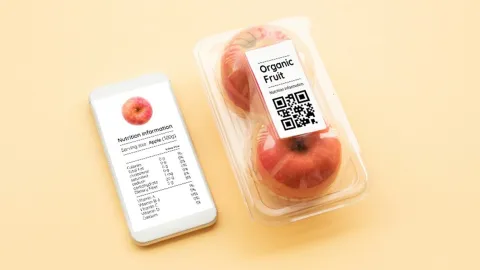
The Barcode (r)Evolution
The barcode on your product can be much more then it is now
Business and regulatory demands on product packaging have grown dramatically in recent years. In the past, every product had a single barcode that served the purpose of going “beep” at the checkout. Today, product packaging often contains multiple barcodes and symbols that are intended to meet the need for more data and that serve varied purposes.
Unfortunately, multiple symbols cause consumer and supply chain confusion and don’t always communicate with each other. We now have the chance to work together to build a working system, where all the information can reliably provided to the parties in the supply chain and to consumers.
Consumer expectations have evolved
Consumers use their smartphones to learn about products inside and outside of the store. In addition, manufacturers and retailers seek to interact with shoppers to share information about the benefits of their products and to create engagement between brand and consumer. This means that all products must deliver accessible, accurate data for the companies who manufacture, transport, and sell them – and finally to the consumers who purchase them.
Today’s technology enables wider utilization of product codes
As consumer expectations have grown, technology solutions have advanced to try to meet an ever-growing need for data that extends beyond the consumer to your trading partners and even to regulators. You may be a retailer seeking to improve ROI and checkout speed. Perhaps you are a brand owner looking to make a promotional QR code provide more value to your customer and your business. Or maybe you are a solution provider working to serve industry. Whatever your role in the supply chain, there are things you can do today to reduce costs, provide transparency (and data), and create more engaging experiences that were not available just a few years ago.
Examples are everywhere
Moving beyond traditional point-of-sale barcodes and into the next generation of technology is not a new concept. Symbols and codes on-pack can help improve sustainability, share important sourcing information, create customer engagement and improve consumer experiences. Manufacturers and retailers, along with their customers, have already begun to experience the benefits of newer solutions, such as:
- GS1 DataMatrix barcodes containing batch/lot and expiration data information are actively being used on fresh foods to support traceability, waste management, and consumer safety around the globe.
- Japan has led the way in implementing RFID at point-of-sale to create an environment without the need for cashiers, registers, or even cash itself, helping reduce the risk of theft. Such technologies will be even more important as our world moves toward more contactless purchasing.
- The extensive use of 2D barcodes in the Asia-Pacific region has demonstrated the unquestionable ability for retailers and consumers to adapt to new technologies on-pack.
The future of on-pack codes and symbols
As we work with industry we are finding:
- The initial solution to many challenges has been to add extra symbols. GS1’s on-going work aims to reduce the number of symbols needed to accomplish business objectives.
- Interoperability is key to ensure your systems connect to trading partners and ultimately, the consumer. Product codes and symbols must be interoperable – able to work together to unlock the numerous benefits of accurate product information for customers and consumers alike. GS1 standards for identification and data exchange are the foundation to ensure interoperability.
- Flexibility is necessary to both address different business needs and the rapidly-changing technology landscape. At GS1, we support industry-based collaboration that delivers solutions to ever-changing needs of business and consumers alike. GS1 is at the forefront of analysing and evaluating emerging technologies and is partnering with industry to accelerate into the future.


